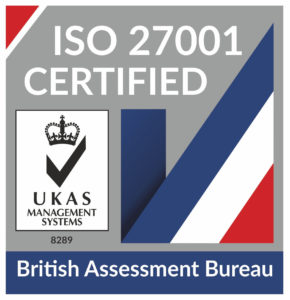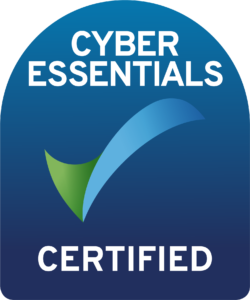
HaloITSM Guides
Documentation to assist with the setup and configuration of the HaloITSM platform
Receiving Stock for Serialised Products & Delivering to the Customer
In this lesson we will cover:
- An Example of How to Update Stock Quantity
- Marking a Site as a Stock Location
- Asset Matching Field
- Asset Serialisation Field
- Example - Adding Assets at the point of Receiving Stock
- Delivering Your Stock
In this example, we will look at an end-to-end process of ordering a serialised product & consigning (delivering) this to the customer. For this example, we will not be considering any invoicing that occurs from a Sales Order (however you will find a worked example in the Billing course that is related to this process).
We will start with a Sales Order - assuming a Quote has previously been accepted by the customer & will look at:
- Raising a Purchase Order for our Product.
- Receiving stock of our Product & the subsequent creation of an Asset (while highlighting some of the key config options around this process).
- Delivering the Asset to the customer.
Before looking at this process, lets make sure we understand all of the relevant configuration options around Stock & Serialised Products.
Stock Control Configuration
First things first - what exactly is a stock location in HaloPSA? Well, a stock location in HaloPSA is simply a site that has been marked as a stock location (shown below) and refers to the locations where stock can be received to. As of v2.170+, a sequence can also be set against a stock location to determine where this location appears in lists (when consigning and receiving stock).
Fig 1. Showing where to mark a Site as a Stock Location
You can also configure stock bins, which will exist within stock locations. Stock bins are a way of granularising the stock inventory within a stock location (enabled from the setting in Configuration > Items and Stock Control). When the checkbox in the above screenshot is selected, there will be a stock tab which appears for the clients site, if stock bins are enabled this appears on a separate tab. When transferring stock from i.e. the Product area, you will notice that you can transfer between bins. There is also a default bin you can set on the configuration page for Assets being swapped back into Stock.
Next, it's best we understand what it means to receive stock for a 'serialised product'. Generally speaking, a serialised product is something that has a serial number attributed to it - this would refer to something such as a Laptop or a Monitor; as opposed to a 'non-serialised product' such as a HDMI cable.
In HaloPSA-speak, a serialised product is a product that, upon receiving stock, will create associated Asset(s). The type of Asset(s) that are created is determined per product by the below field.
Fig 2. Specifying the Type of Asset to create upon receiving stock of a Serialised Product
When receiving stock for your serialised product, you have the option to input up to two fields:
- Asset Matching Field (This will display as the input you have selected to match on in the asset typed details tab, in this case we chose "Serial Number").
- Asset Account Number (Optional)
Here is a simple example on how to Update stock quantity on the Clients Site:
Asset Matching Field
This field can be used for two purposes - to add information to an Asset at the point of creation & to select an existing Asset to be used for consignment (delivery).
When adding Assets into Halo from stock additions, the Asset Matching field can be used to specify some given information for the Asset upon creation. The particular field that is populated upon creating Assets from stock additions/consignment can be set per Asset type, to edit i.e. the "Laptop" Asset Type, we can select the "Asset by Asset Type" view and then right click "Laptop" from the list of Types.
Fig 3. Editing an Asset Type
Fig 4. Specifying the Asset Serialization Field for an Asset of a given type (This can also be achieved by going to Configuration > Asset Management > Asset Type).
You can also set some default details for Assets when being added into Halo (from stock additions). These fields can be set from the associated product, via the 'Linked Asset Defaults' tab.
Fig 5. Specifying Asset field defaults for when Assets are created in Halo via receiving stock/consignment
The other utility this field provides is the ability to pick an Asset to deliver to the customer upon consignment. If the Asset in question has originated from a stock addition, you can then use this field to pick that Asset at the point of delivering to the customer (a worked example for this will follow).
Asset Serialization Field
HaloPSA also provides an additional option to set an 'Asset Serialization field'. This field can be used to identify the specific Asset that has been brought into Stock. Generally, this field would be set to 'Serial Number', however, you can select the field to use for Asset serialization via Configuration > Items and Stock Control.
Fig 6. The Asset Serialization Field, found in Configuration > Items & Stock Control
Another important configuration option can be seen in Fig 6, namely - 'Create Serialised Assets'.
Assets can be created at one of two points:
When Stock is Added
Selecting the 'When Stock is Added' option in the 'Create Serialised Assets' field will result in Assets being created at the point of stock being received. This means that Assets will be added in to HaloPSA before they are marked as delivered (created before consignment) & is generally used when you store serialised hardware in a stock room.
When items are Consigned
If you only want to track serialised Assets once they have been delivered to the customer, you can select 'When items are consigned' in the 'Create Serialised Assets' field. With this option selected, you will still be able to receive stock of serialised products, but associated Assets will not be created at this point. With this option selected, Assets are created at the point of marking the product as being delivered.
When serialised items come into stock/are consigned you will be prompted to populate the Asset Serialisation field for the asset that is being created from the product. By default only the asset serialisation field can be populated at this stage, however you can also have the asset tag appear to. To do this head to Configuration > Items and Stock Control, see the settings shown in Fig 7.
Fig 7. Show asset tag field on consignment/stock in settings
When enabled these the asset tag field will show in addition to the asset serialisation field when items are being added into stock/consigned. This only applies if you are not using the 'Asset Tag' field for serialisation and you have the 'Create Serialised Assets' field set.
Note: You will need to log out/back in to see these settings take effect.
Let's take a look at some examples of how these two options work.
Example - Adding Assets at the point of Receiving Stock
In this example, we will look at an end-to-end process for receiving & consigning stock. We will start with a Sales Order, then raise a Purchase Order for our Product. We will select the option to create serialised Assets at the point of adding stock & look at the options along the way.
Let's start with our Sales Order.
Fig 8. Our Sales Order, from which we will Order our Stock
I can see here that my 'In Stock' quantity for this product is 0 - so I best raise a Purchase Order and get this into stock! You'll see an option 'Order Items' from the Sales Order, which will allow you to raise a PO for all the products on your SO.
Fig 9. The 'Order Items' option from a Sales Order
Fig 10. Selecting your quantity and Supplier for your PO - values defaulted from the Sales Order
Upon clicking save, I then have the option to either:
- "Deliver to us" - meaning the laptop will first come into my warehouse, then subsequently be delivered to the customer.
- "Deliver to the User" - meaning the laptop will never come into my warehouse and will be delivered directly to the customer.
- "Deliver to the Sales Order Address" - It will send this to the site of the address on the Sales Order. This address field can be manually overridden on the sales order, or it can be left the same as the sites address, the purchase order will populate with the address given on the sales order.
Note: If the delivery method is "Deliver to the User" and the address was manually added to the SO, then it will not pull through to the PO.
Fig 11. Delivery Options
For the sake of this example, I will select 'Deliver to us', to allow for the laptop to come into stock and then later get delivered to the customer.
Upon clicking 'Save', I can see a link to the PO from my Sales Order line.
Fig 12. The Sales Order line - following items being ordered (from above)
If I click on the icon underlined in Fig 11, I will be taken to the Purchase Order.
Fig 13. The Associated Purchase Order
From this PO, I have an option to 'Receive Stock'. If the delivery method was "Deliver to the User" then there wouldn't be the option to receive stock.
Fig 14. The "Receive Stock" option from a Purchase Order
Upon clicking 'Receive Stock', I get the option to pick the stock location I am receiving my stock to and a quantity being received.
Fig 15. Receiving Stock to a given stock location
As I have specified that Assets are to be created at the point of receiving stock, I am presented with the field previously mentioned in this lesson.
Fig 16. Inputting Asset Details
These details would be entered at the point of the product being delivered to your office/warehouse.
Note: If your Stock Serialization Matching Field (Fig 4) is equal to your Asset Serialization field (Fig 6), then you will only be presented with a single field - namely, the field you select at these points.
If you still wanted to display the Asset Tag field at the point of delivering your stock, you can enable the below option in Configuration > Items and Stock Control.
I selected asset number as the stock serialization field on the asset type "Laptop". Asset tag is the same field as Asset number, that is why we are seeing Asset Tag on the serialization screen shown in Fig 15.
Fig 17. Enabling the option to display the Asset Tag field when delivering Stock (Consigning), if not presented when receiving Stock
Once you have entered your details and saved, you will see an 'Assets Received' tab appear on the PO, detailing the Asset(s) you have just created.
Fig 18. The Assets Received Tab on a PO
Delivering your Stock
So you now have received your stock and created your Asset - great! This has created a new Asset in Halo and placed this Asset at your specified stock location. At this point, you (or one of your engineers) would be configuring the device as per the Client's needs.
The last part of this process is to finally deliver the Asset to the customer. To facilitate this, head back to the original Sales Order and select 'Consign Items' (Or 'Deliver Items').
Fig 19. Consigning/Delivering Items from a Sales Order
You are then prompted to select stock location you are delivering the Asset(s) from:
Fig 20. Selecting where items are delivered from
Upon saving, you are prompted to select the Asset(s) you are delivering:
Fig 21. Selecting the Asset(s) you are delivering
At this point, you can input the details into the 'Asset Matching Field' and, based on the Asset type (Fig 3), Halo will search for Assets with that field populated with the corresponding details entered (that have been created via stock additions). Alternatively, you can browse the stock to select the assets, which is what was done in this case.
Fig 22. Using the Asset Matching Field to select the relevant Asset to Deliver
You could also select 'Auto Pick' and let Halo find a valid Asset at random to use for delivery. Finally, you can select 'Browse Stock', where you can view a list of available Assets for delivery. Upon saving, your Asset will be moved to the site of the Sales Order, unless you have otherwise specified a distinct consignment site for your Sales Order line. This can be done by changing the consignment site on the product line of the sales order.
Fig 23. Editing a Product Line on the SO
Fig 24. Changing the Consignment Site for a Sales Order Line
Popular Guides
- Asset Import - CSV/XLS/Spreadsheet Method
- Call Management in Halo
- Creating a New Application for API Connections
- Creating Agents and Editing Agent Details
- Departments and Teams
- Halo Integrator
- Importing Data
- Multiple New Portals with different branding for one customer [Hosted]
- NHServer Deprecation User Guide
- Organisation Basics
- Organising Teams of Agents
- Step-by-Step Configuration Walk Through
- Suppliers



